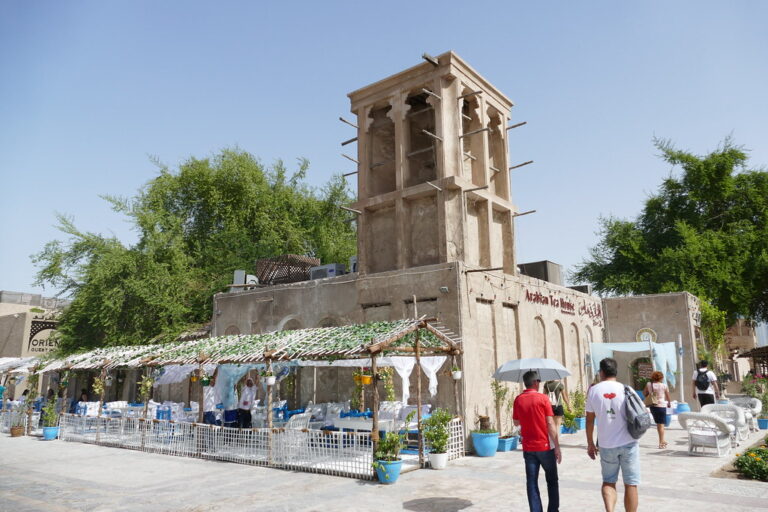This article may contain affiliate links. When you purchase something we recommend, we make a small commission. You don’t pay anything extra. 💘 For more details, check out our Terms of Use page.
I recently went back to Malta with one goal in mind: to scuba dive. If you’re curious about what it’s like to go scuba diving in Malta during winter, here’s what I learned and what I’d recommend.
Even though I had been to Malta before, it was not as a diver.
This time the purpose was singular, and it happened to overlap with the Christmas and New Year period, which added a bit of a festive touch to the off-season quiet.
There are a few things worth keeping in mind when booking a winter dive trip to Malta, especially if you’re hoping to get underwater more than once or twice.
Table of Contents
ToggleThe Malta scuba scene
While I haven’t been diving for many years, Malta has always been high on my list. It’s one of those destinations that divers mention often, and for good reason.
There are plenty of accessible wrecks, caves, and cliff walls, and even in winter, the water temperatures aren’t bad. The season technically slows down around November, but some providers stay open through December and early January.
That said, you’ll want to plan ahead. A lot of shops close for the holidays, and boat dives may not be available in the off-season due to maintenance or low demand.
So if you’re heading there in winter, your best bet is to look at shore dives. Luckily, some of Malta’s best dive spots are accessible directly from the coast.
After checking in with a few different dive schools, we ended up booking with Ritual Dive in Gozo. They were open, responsive, and located near many of the shipwreck sites we were hoping to dive.

Planning Your Dive Days
We gave ourselves about a week in Malta, which I’d say is the sweet spot. That gave us a buffer day before diving, three days of actual dives, and a couple of days after to relax and get ready to fly. If you’re travelling in winter, this kind of pacing really helps. The weather can shift, so having flexible days makes a difference.
Because we were staying in the city centre and our dives were all based around Gozo, our mornings started early. We had to drive to the ferry terminal to catch the first boat out to the island, which wasn’t ideal, especially on tired legs after back-to-back dives. But it worked.
Still, I’d recommend Gozo as a base if you’re planning to dive more than once. Ritual Dive also has accommodation on site, so you can stay just a few minutes from the water. The accommodation
With that in mind, you definitely need a car.

Do You Need a Car in Malta?
Short answer: yes. While my first trip to Malta was entirely public transport based and totally doable, having a car gave us much more flexibility especially when diving or trying to fit more into a shorter trip.
That said, there are a few things to keep in mind before you decide to drive.
First, they drive on the left in Malta. If that’s not what you’re used to, it might take a bit of adjusting. Second, the traffic can be intense. Maltese drivers are known to be a bit aggressive, and the roads themselves aren’t always the most forgiving. Tiny alleys, tight turns, and not a lot of room for error.
In summer, this is even more noticeable with the extra crowds. Winter is quieter for sure, but it’s still worth mentioning if you’re not confident behind the wheel or just want a more relaxed holiday.
If you’re used to driving in busy European cities or places where space is limited and drivers don’t hesitate, you’ll probably be fine. Just make sure you go into it with the right mindset.
One thing I’d absolutely recommend is making sure you have proper insurance. Something always happens. In our case, it was a scratch while taking the car on the ferry and it nearly turned into a nightmare.
I use and compare prices for car rentals, with Discovercars.com. It is a giant rental and comparison site on the market and it has a lot of perks that make sense if you travel often.
Once you head to Discover Cars, you’ll find an easy search engine to filter by location, dates and pick up location.
Tip: Always check a few different pick up locations when booking a rental car.
How to Get to Malta
Flights to Malta are generally affordable from most European cities, especially in the off-season. You’ll be flying into Valletta Airport, which is small, efficient, and easy to navigate.
If you’re renting a car, the pickup area is just a short walk outside the terminal. It’s all very straightforward.
Even though winter is considered low season, I’d still recommend booking your flights and car in advance. You’ll have more choice, better prices, and avoid any last-minute surprises at the airport.

Getting to Gozo
If you’re diving in Gozo, there are a couple of ways to get there depending on where you’re staying and whether you’ve rented a car.
Option 1: Drive and take the standard ferry
From the airport or central Valletta, it’s about a 45-minute drive to the Ċirkewwa ferry terminal in northern Malta. The Gozo Channel ferries run frequently throughout the day, and the crossing takes around 25 minutes. You don’t need to book in advance. Just show up, pay at the checkpoint, and drive on board. You only pay for the round trip on the way back, which is a small perk.
The ferry schedule is consistent, with crossings every 30 to 45 minutes during normal hours. You can check the latest timetable here.
Option 2: Fast ferry from Valletta without a car
There’s now a high-speed passenger ferry that runs from Lascaris Wharf in Valletta directly to Mġarr in Gozo. It’s a good option if you’re staying in the capital and don’t want to rent a car. The trip takes around 45 minutes, and tickets cost between €6 and €7.50. The only catch is that there aren’t as many departures, especially in the off-season, so you’ll need to plan around the limited schedule. Check out the updated times here.
Keep in mind that once you arrive in Gozo, you’ll still need to get to your dive base. If you’re diving with Ritual Dive, they offer a pickup service from the ferry terminal for €10, which is a great value and worth asking about. Prices might change, so it’s best to confirm when you book.
If diving is your main reason for coming to Malta, I’d honestly recommend staying in Gozo during your dive days to avoid the early morning ferry trips. We stayed in Valletta and drove each day, which worked fine but meant some very early starts.
Best Winter Dives in Malta
When planning our winter scuba trip to Malta, we focused on shore-accessible dives since most boat dives don’t run during the off-season.
Be prepared to carry your gear from the car to the dive site, get dressed and then walk to the entry point. This part can incude navigating stairs and uneven rocks, so don’t underestimate the physicall effort invovlved.
Your fitness level matters more than you think when you’re hauling a tank and wetsuit across rocky terrain.
Also, in popular spots, you might be sharing the area with swimmers, snorkelers, and sightseers, even in winter. It can get surprisingly crowded, so give yourself extra time and patience when gearing up and entering the water.
One of the wrecks we originally hoped to visit was Um El Faroud, a massive oil tanker off the main island. But because it typically requires a boat and the conditions weren’t right, we had to skip it this time.
Instead, we based ourselves in Gozo and completed four shore dives that were absolutely worth the trip.
Blue Hole
This was by far the most stunning location visited in terms of the setting. The Blue Hole is both pure marketing and pure bliss. You enter the water through a circular pool carved into the limestone, then pass through a natural archway into the open sea. It’s dramatic and photogenic, and you don’t even need to go very deep to enjoy it.
That said, you need to be careful getting in and out, especially with full gear. The entry involves walking across rocks, and footing can be tricky depending on sea conditions.
Even though the Azure Window no longer exists, the Blue Hole has become the top attraction, and when we visited, it was packed even in winter. Above the site, you can still stand near where the Azure Window once stood — I was lucky enough to have seen it years ago, so being back at the same spot with a different perspective was special.
Inside the hole itself, there’s also a hidden tunnel you can explore on the ascend, which adds a sense of adventure to the dive.
Ras il-Hobz (aka Middle Finger)
This dive is named after a huge column of rock that rises from the seabed up to just 8 meters below the surface. It sits in a channel with walls on either side and plenty of fish life darting in and out. It’s especially great for photographers, with moody wall scenes and dramatic structures to shoot as you spiral around the central column.




Karwela Wreck
This was the wreck dive I was most excited about, and it didn’t disappoint. The Karwela is an old passenger ferry that was purposely sunk to create an artificial reef. It sits upright at around 40 meters, with the top deck beginning at about 30 meters, so you’ll need to be qualified for deep dives.
The most iconic part is the staircase inside, which has become a favorite for underwater photographers. I managed to get a snap of it before we ascended. Even just exploring the outer decks gives you a sense of how massive this wreck is.





Xlendi Ferry Wreck
Located close to Karwela, the Xlendi was also scuttled as an artificial reef in 1999. Unfortunately, it rolled during the sinking process and now sits upside down. That limits visibility and access, especially since you can’t enter the interior safely.
Still, it’s worth a visit to see the huge propellers, which are fully exposed and offer a different kind of visual. It’s not as impressive as Karwela overall, but makes for a good secondary dive.


Other Wrecks and Sites We’d Go Back For
We couldn’t hit them all, but these are on our list for a return trip:
- Um El Faroud – A massive tanker in Malta, split in two after an explosion, and considered one of the top dives in the region.
- P29 Patrol Boat – Located near Cirkewwa, this scuttled military boat is covered in marine life and great for underwater photography.
- Rozi Tugboat – Shallower than some of the others, and known for its good visibility and frequent fish schools.
- Inland Sea – A shore-accessible dive that begins in a calm lagoon and exits through a long tunnel into the sea. We had it on our list but didn’t end up doing it due to time.
How to Prepare for Winter Diving in Malta
If you’re used to diving in warm tropical waters, winter diving in Malta might feel like a bit of a shift — but it’s totally manageable with the right prep.
Water temperature & gear: In December and January, water temps hover around 17–18°C. Not freezing, but you’ll definitely want a 5mm or 7mm wetsuit, or a drysuit if you have the training. I was layering shorties to give me some extra warmth.
Certifications: We weren’t Nitrox certified when we visited, and while that wasn’t a dealbreaker, it was something that came up a lot. Many of Malta’s deeper wreck dives are ideal for Nitrox, so having that cert can give you more options. That said, we were still able to do deep dives (up to 40m) with our advanced and deep diver qualifications.
Dive planning: Our dive school, Ritual Dive, had a clear focus on safety. They didn’t push two deep dives per day and were flexible based on conditions. We did one deeper wreck and one calmer dive. In winter, this kind of approach matters since the sea conditions and weather can change quickly.
Rest days: Give yourself one day before diving and at least two after to decompress and enjoy the island without a schedule. I recommend staying in Gozo for 2–3 days of diving and then going back to Malta for a few slower days before flying.
Marine Life: If you’re into macro photography or spotting the little things, you’ll be happy to know that nudibranchs are also present, and some of the wrecks offer good opportunities to find them.
Quick FAQ: Malta Diving in Winter
Is Malta good for diving in winter?
Yes! While the water is cooler, visibility is excellent and most dive sites are less crowded. It’s a great time for shore diving if you’re prepared.
Do I need a drysuit?
Not necessarily. I managed with layered wetsuits and I am someone that gets cold super fast, but a 7mm or drysuit would be more comfortable for longer or deeper dives.
Can you dive the wrecks without Nitrox?
You can, as long as you’re certified for deep dives but Nitrox does help with bottom time and recovery, especially on back-to-back dives.
Is Gozo or Malta better for diving?
Both have solid sites, but Gozo is where you’ll find the famous wrecks and formations like the Blue Hole, Karwela, and Ras il-Hobz.
Are boat dives available in winter?
Not usually. Most shops pause boat dives in the off-season due to weather and lower demand, but shore diving is still excellent.
What I’d Do Differently Next Time
- Base myself in Gozo for the dive days. The ferry commute from Valletta worked, but it made for some long mornings.
- Get Nitrox certified beforehand. It would’ve added flexibility and extended bottom time, especially for the deeper wrecks.
- Build in a full rest day between dive days. Diving takes it out of you, and it would’ve helped to have one slow day in between.
- Pack better layers. Malta isn’t freezing in winter, but post-dive wind and changing outdoors? It gets chilly fast.
TL;DR: If You Skipped to the End
- Malta is a great winter dive destination, especially for wrecks and shore dives around Gozo.
- Plan to base yourself in Gozo if diving is the main focus. Having a car helps a lot.
- Water temps are around 17–18°C in December/January, so dress accordingly. A 7mm wetsuit or drysuit is ideal.
- You don’t need Nitrox but having it gives you more dive options.
- Most boat dives don’t run in winter, but shore diving is still top-notch.
- Recommended dive sites: Blue Hole, Karwela, Ras il-Hobz, and (if you have time) Um El Faroud and the Rozi tugboat.
You Might Also Enjoy

Scuba Diving in Malta in Winter: How to Prepare and What to Expect
Planning a scuba diving trip to Malta in winter? Discover the best dive sites, how to get to Gozo, what to expect from marine life, and why Malta is a top cold-season diving destination in Europe.

What to Expect Driving and Renting a Car in Malta
Planning a trip to Malta? Discover everything you need to know about renting a car, driving tips, insurance must-knows, and the best places to explore by car including the mistake we made and how to avoid it.

First Time in Malta? 5 Things to Add to Your Weekend Trip
Don’t get overwhelmed. Here are five key spots you’ll want to add to your first Malta trip.



